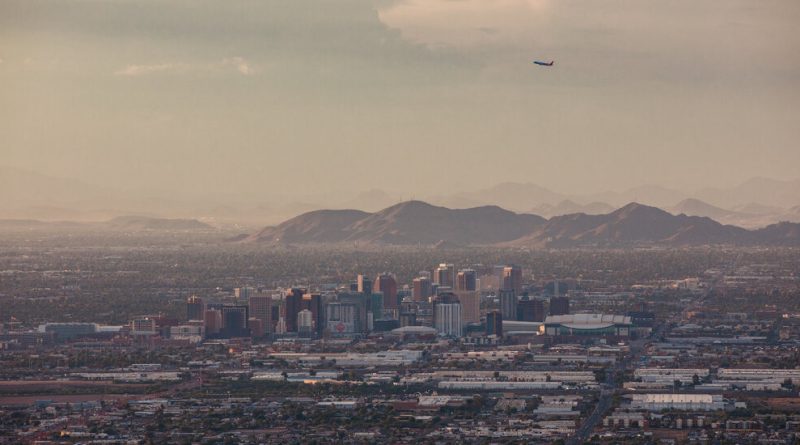Phoenix Blackout in Heat Wave Would Overwhelm Hospitals, Study Warns
[ad_1]
If a multiday blackout in Phoenix coincided with a heat wave, nearly half the population would require emergency department care for heat stroke or other heat-related illnesses, a new study suggests.
While Phoenix was the most extreme example, the study warned that other cities are also at risk. Since 2015, the number of major blackouts nationwide has more than doubled. At the same time, climate change is helping make heat waves worse and increasing instances of extreme weather around the world.
The study, published Tuesday in the journal Environmental Science and Technology, suggests that the risk to cities would be compounded if a hurricane, cyberattack or wind storm were to knock out power during a heat wave and deprive thousands of air-conditioning.
This summer, two-thirds of North America, including the Southwest, could experience shortfalls in the electrical grid, particularly during periods of extreme heat when demand for air-conditioning spikes, straining resources, according to an analysis released this month. Phoenix’s mayor, Kate Gallego, has urged the federal government to add extreme heat to the list of disasters like floods and hurricanes that could prompt a federal disaster declaration.
The new analysis found that Phoenix, which is heavily reliant on air-conditioning to keep residents cool in the desert heat, would experience immense loss of life and illness if a citywide blackout during a heat wave lasted for two days, with power gradually restored over the next three days.
Under that scenario, an estimated 789,600 people would require emergency department care for heat-related illnesses, overwhelming the city’s hospital system, which has only 3,000 emergency department beds, the study said. An estimated 12,800 people in Phoenix would die, the study said.
“I describe this as probably the greatest climate-related hazard we can imagine: a blackout during a heat wave,” said Brian Stone Jr., the lead author of the study and a professor in the School of City and Regional Planning at the Georgia Institute of Technology.
To anticipate the effects of a prolonged loss of power during extreme heat, researchers modeled the temperatures that residents in Atlanta, Detroit and Phoenix would be exposed to on an hourly basis, if the power were on during a heat wave, and if it was not.
The researchers began by examining past temperatures in those three cities. In Phoenix, they analyzed temperatures from a July 2006 heat wave, when the average maximum temperature was 113 degrees.
Then the researchers estimated what the temperature would be at hundreds of points across the cities, not just at the airport, where the temperature is usually measured.
They estimated indoor temperatures for various residential buildings and used annual surveys collected by the U.S. Department of Labor to model how much time residents were likely to spend indoors and outdoors, depending on their age, sex, occupation and income. And the authors used census data to factor in the racial makeup of the three cities, Dr. Stone said.
In Atlanta, 11,600 people, or about 3 percent of the population, would require emergency department care if a five-day heat wave coincided with a multiday blackout, the team found. The city has only about 2,000 emergency department beds, and the scientists estimated that six people in Atlanta would die during the dual crises.
The team, which also included researchers from Arizona State University and the University of Michigan, found that 216 people would die during a heat wave and power failure in Detroit.
The researchers acknowledged certain limitations in their findings. For example, their model assumed that people would stay put during a heat wave and blackout. In reality, the authors noted, some people would be able to relocate and emergency workers would try to evacuate residents and set up power generators at cooling centers.
There are strategies, the study said, that could help protect residents during overlapping blackouts and heat waves.
If the cities planted enough trees to shade half of their streets, deaths would drop by 14 percent in Atlanta, 19 percent in Detroit and 27 percent in Phoenix, the study said.
And if they installed highly reflective “cool roofs” on every building, deaths would drop by 21 percent in Atlanta, 23 percent in Detroit and 66 percent in Phoenix.
But as climate change is expected to increase the frequency, length and intensity of heat waves, the study projected that deaths and illnesses would rise even further.
Jane W. Baldwin, an assistant professor of earth system science at the University of California Irvine, said that the findings should underscore the importance of investing in a stronger electrical grid. That would “help prevent this terrifying compound risk in the present and will continue to pay dividends in the future as heat waves continue to worsen,” Dr. Baldwin said.
